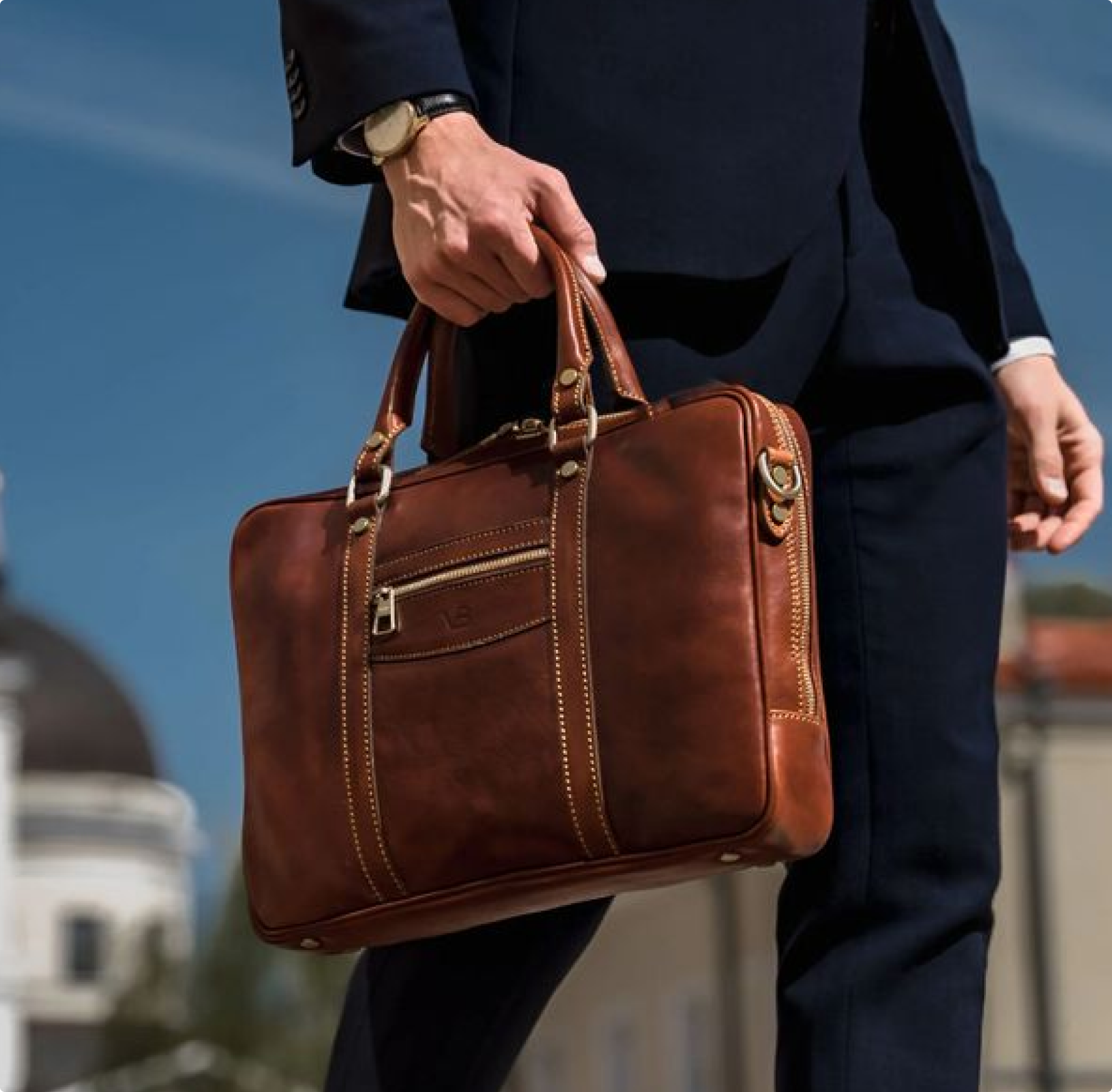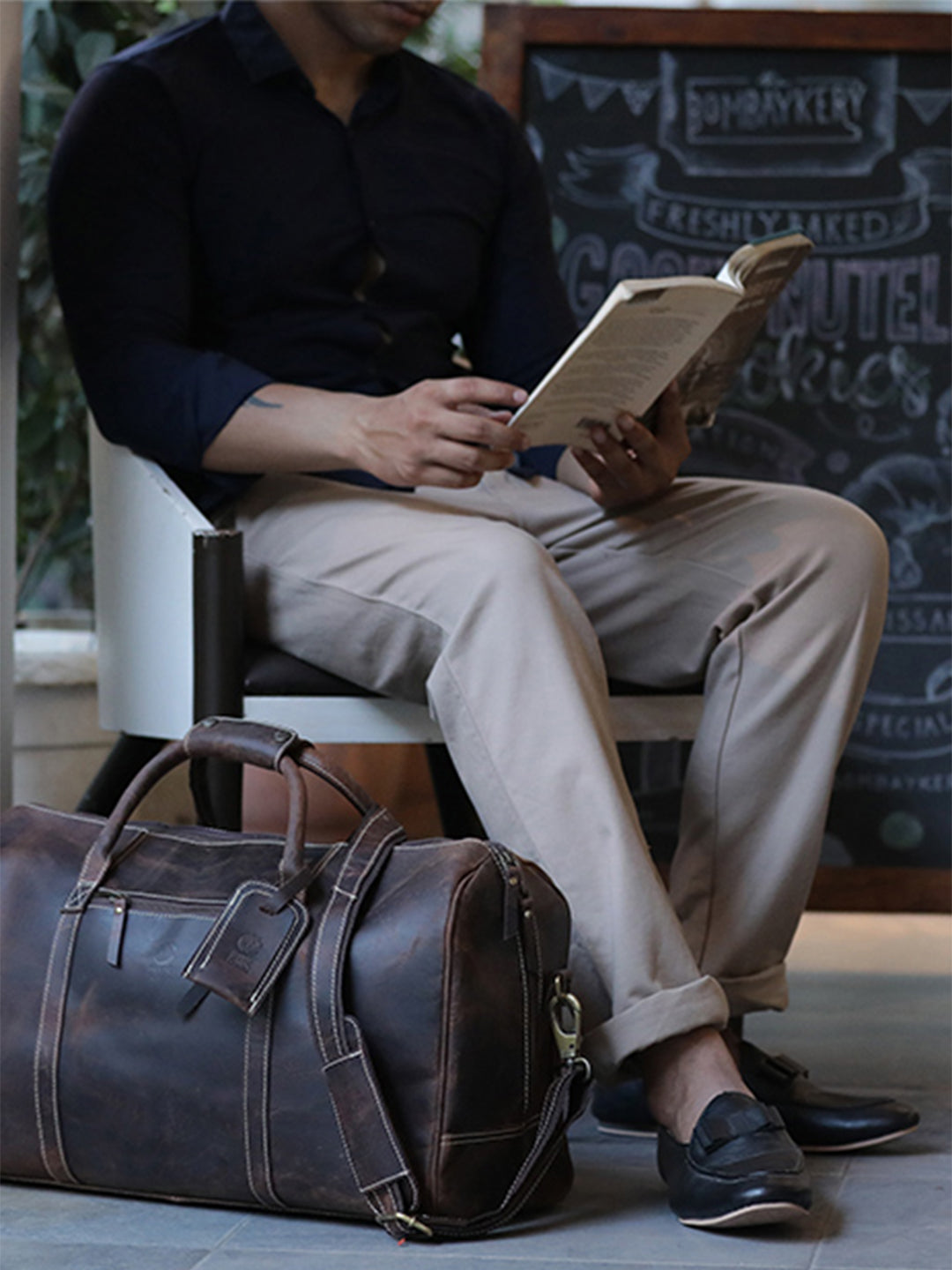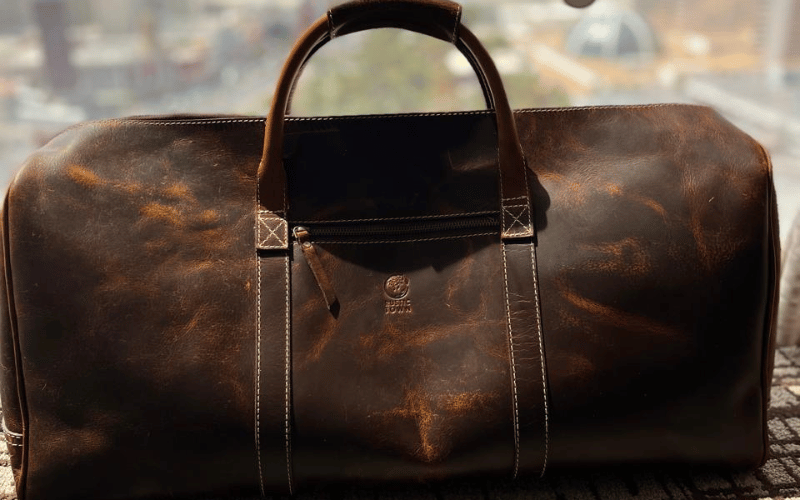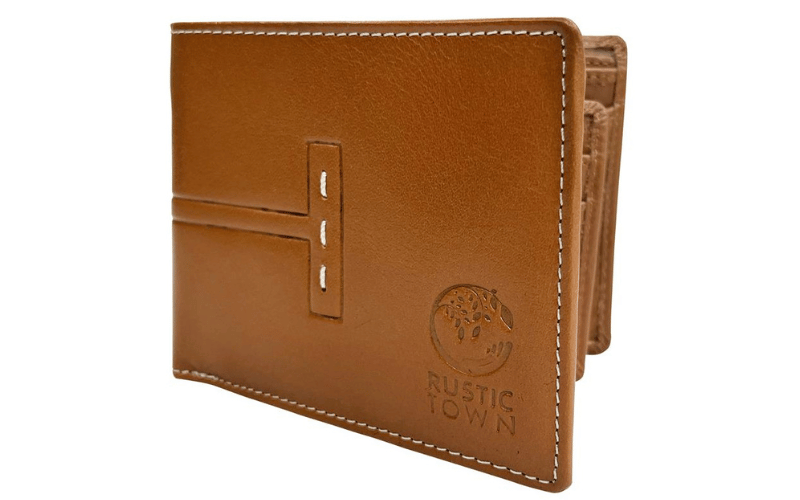Most people assume backpacks evolved from simple school bags or basic hiking gear. The truth is far more fascinating - and life-or-death serious.
Your leather backpack's design traces back 5,000 years to the Arctic, where Inuit hunters faced a survival challenge that would reshape how humans carry essential gear forever.
When Carrying Gear Meant Life or Death
Picture the Arctic tundra 5,000 years ago. Temperatures plummet to -40°F. An Inuit hunter prepares for a multi-day expedition that will determine whether their family survives the brutal winter ahead.
The challenge seemed impossible: How do you carry 50+ pounds of essential survival gear - spears, harpoons, arrows, knives, fire-starting materials, and emergency supplies, while keeping both hands completely free for hunting?
A single moment of fumbling for a weapon could mean death. Not just for the hunter, but for everyone depending on them back home.

The Brilliant Engineering Solution
The Inuit didn't just solve this problem, they perfected it. Their innovation created four design principles that remain unchanged in modern backpacks:
The Two-Strap Distribution System Rather than carrying weight on one shoulder, they distributed the load evenly across both shoulders. This prevented the muscle fatigue that could prove fatal during extended hunts across frozen terrain.
Spine-Centered Positioning They discovered something profound: the human spine is nature's perfect load-bearing structure. By positioning weight directly over the spine, hunters could carry substantial loads for days without injury or exhaustion.
Waterproof Construction Arctic conditions demanded absolute protection. Using seal skin, the only material available that could keep tools dry in brutal weather, they created the first truly weatherproof carrying system.
Instant Access Design When a caribou appeared or danger threatened, hunters needed to grab specific tools in seconds without removing their pack. The design allowed quick access to any item while maintaining full mobility.
A Design That Conquered the World
The Inuit had unknowingly created load distribution technology so effective that it would eventually spread across every culture and continent:
1800s: European Arctic explorers witnessed Inuit hunters in action and immediately adopted the superior carrying system for their own expeditions.
1920s: Military forces recognized the tactical advantage and developed canvas versions for soldiers who needed to carry equipment across varied terrain.
1960s: Students discovered this ancient hunting technology was the perfect solution for carrying heavy textbooks across campus.
1990s: The rise of laptops and mobile work gear created new carrying challenges. Professionals turned to the same spine-centered design that had served Arctic hunters for millennia.

Modern Science Confirms Ancient Wisdom
Today's ergonomic research and biomechanical studies validate what Inuit hunters learned through trial and error thousands of years ago. The two-strap, spine-centered design remains the optimal method for human load carrying.
Sports medicine experts confirm that this ancient configuration:
- Minimizes stress on individual muscle groups
- Maintains natural spinal alignment
- Allows for maximum endurance with heavy loads
- Provides superior balance and mobility
From Survival Tool to Daily Essential
Every morning when you shoulder your backpack, whether heading to work, school, or adventure, you're using survival technology refined over 5,000 years of Arctic hunting.
The basic engineering principles haven't changed because they didn't need to. The Inuit achieved functional perfection on the first attempt, creating a design so effective that modern manufacturers can only refine materials and details.
Carrying Forward a Legacy
When you choose a quality leather backpack, you're not just buying a bag, you're continuing a tradition of functional design that spans millennia. You're connecting with the ingenuity of hunters whose lives depended on getting every detail right.
The same engineering principles that helped Inuit families survive Arctic winters now help you navigate modern life, carrying everything from laptops to hiking gear with the same reliable efficiency.
This is the power of design born from necessity, refined by survival, and perfected through generations of real-world testing in the planet's most unforgiving environment.
The Arctic hunters who created this technology could never have imagined their survival innovation would become an essential part of daily life across the globe. Yet their legacy lives on in every backpack, proving that the best designs are timeless precisely because they solve fundamental human challenges.
Ready to experience this 5,000-year tradition of survival engineering? Discover premium leather backpacks that honor this heritage of functional perfection at RusticTown.com







